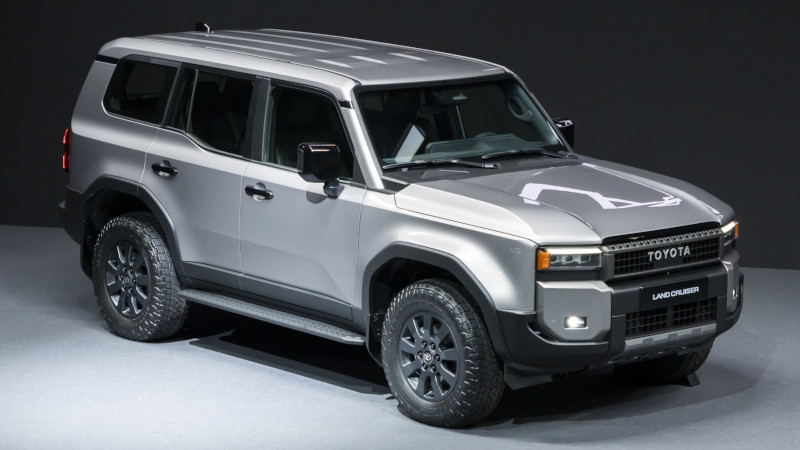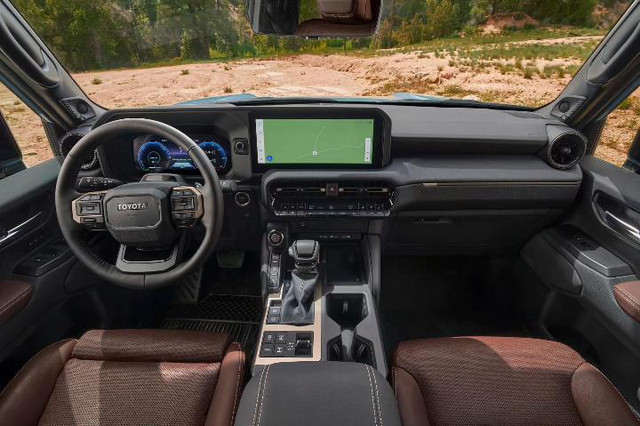Prior to its arrival in South Africa next year (2024), the all-new Toyota Land Cruiser Prado family SUV has had its international debut, bringing with it considerable technical improvements, improved performance, and a rugged exterior design style.
Because of its ability, amenities, and passenger-focused comfort, the Prado has been one of South Africa’s most admired large SUVs since it first appeared in the 1990s. The all-new model maintains this tradition with go-anywhere performance and a look that captures the spirit of the Land Cruiser.

Design and size
In order to deliver on the notion of utilitarian beauty, the new-generation Prado follows a fresh design direction that blends traditional and modern style cues, using horisontal lines inspired by vintage Land Cruisers.
The tri-beam headlamps and rectangular grille at the front end are supported by a low-set front cowl that increases visibility in the front. A sense of strength is conveyed by the muscular wheel arches and strong horizontal lines, and the low beltline enhances occupant visibility even further.
Toyota has also released pictures of the forthcoming Prado fitted with round headlights, but the Japanese company is secretive about the two contrasting front-end designs. It is possible that specific designs are destined for specific markets or that customers will be able to choose between the two. Another possibility is that one of them (perhaps the version with round headlights) will be available as a limited edition at launch.
[mailchimp_list]
The Prado’s basic taillight signature and vertically oriented tailboard complement its front end, and both its front and rear lower bumpers are finished in a shade of silver.
The all-new Prado is longer, broader, and taller than the previous model, measuring 4 920 mm long, 1 988 mm wide, and 1 860 mm high. Its 2 850 mm wheelbase has been extended by 60 mm, making it the same length as the Land Cruiser 300’s.
The Prado’s interior has dual digital panels for the entertainment system and instrument cluster, a clear structure for the switches that combine fundamental operations together, and a clean, fashionable, and practical interior design.

Chassis, suspension, and steering
The TNGA-F ladder-frame chassis, which is tough and sophisticated and is 50 percent more rigid than the current-generation Prado, is shared by the Prado and the Land Cruiser 300. This helps to boost overall vehicle rigidity by 30 percent.
With more wheel articulation for off-roading and outstanding handling and ride comfort for on-road use, the strong platform enhances suspension performance.
The front stabiliser bar can be disconnected for even better wheel articulation thanks to Toyota’s brand-new stabiliser-bar control system, which also allows the Prado to travel farther off-road thanks to improved functionality for the multi-terrain select and multi-terrain monitor systems.

The use of electric power steering increases control when off-roading, improves low-speed road agility, and makes vehicles compatible with active safety features like lane tracing assist.
In order to meet the distinct requirements of various global markets and their operating conditions, the new Prado will use a selection of turbocharged petrol and diesel-based powertrains. Prados destined for South Africa will, in all likelihood, use the 2,8-litre GD-6 engine from the Hilux and Fortuner.
As the brand-new Land Cruiser Prado is introduced in South Africa in Q2 2024, more information, including local specifications, will become available.





























